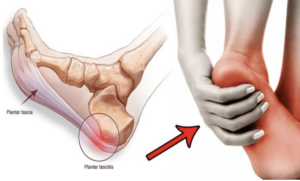Orthotic insoles are a type of shoe insert designed to provide support and cushioning to the foot. They can be used to treat a wide range of foot conditions, as well as alleviate pain in other areas of the body such as the knees, hips, and lower back. Orthotic insoles come in a variety of shapes, sizes, and materials, and can be custom-made or purchased off-the-shelf.
The benefits of orthotic insoles are numerous. They can improve foot function, reduce pain, and prevent further damage to the feet. They can also improve posture and balance, as well as reduce the risk of falls. In this article, we will explore the different types of orthotic insoles, their benefits, and how to choose the right type for your needs.
Types of Orthotic Insoles
Orthotic insoles come in a variety of types, materials, and styles, each with its own unique benefits. Here are some of the most common types of orthotic insoles:
1. Arch Support Insoles
Arch support insoles are designed to provide support and cushioning to the arch of the foot. They can be used to treat conditions such as flat feet, plantar fasciitis, and overpronation. Arch support insoles come in a range of materials, including foam, gel, and cork.
2. Heel Cups
Heel cups are designed to cushion and support the heel of the foot. They are often used to treat conditions such as heel spurs, plantar fasciitis, and Achilles tendonitis. Heel cups can be made of silicone, foam, or other materials.
3. Metatarsal Pads
Metatarsal pads are designed to alleviate pain and pressure in the ball of the foot. They are often used to treat conditions such as Morton’s neuroma, metatarsalgia, and sesamoiditis. Metatarsal pads can be made of foam, gel, or silicone.
4. Full-Length Insoles
Full-length insoles are designed to provide support and cushioning to the entire foot. They can be used to treat a range of conditions, including flat feet, overpronation, plantar fasciitis, and heel spurs. Full-length insoles come in a range of materials, including foam, gel, cork, and leather.
Benefits
Orthotic insoles offer a range of benefits for those suffering from foot conditions or pain. Here are some of the most significant benefits:
1. Improved Foot Function
Orthotic insoles can improve foot function by providing support and cushioning to the foot. This can help to alleviate pain and reduce the risk of further damage to the feet. Orthotic insoles can also improve gait and balance, as well as reduce the risk of falls.
2. Pain Relief
Orthotic insoles can provide pain relief for a range of foot conditions, including flat feet, plantar fasciitis, and heel spurs. They can also alleviate pain in other areas of the body, such as the knees, hips, and lower back, as these conditions are often linked to problems with the feet.
3. Improved Posture and Balance
Orthotic insoles can improve posture and balance by providing support and cushioning to the feet. This can help to improve gait and reduce the risk of falls.
4. Prevention of Further Damage
Orthotic insoles can help to prevent further damage to the feet by providing support and cushioning to the affected areas. This can help to alleviate pain and reduce the risk of further damage.
Choosing the Right Insoles
Choosing the right orthotic insoles can be crucial in achieving the best results for your specific foot condition or pain. Here are some factors to consider when selecting orthotic insoles:
- Foot Condition: Different types of orthotic insoles are designed to address specific foot conditions. It is important to identify your specific foot condition and select the appropriate insole to address it.
- Arch Type: The shape and height of your foot arch can affect the type of insole that will be most beneficial for you. High arches may require a different type of support than flat feet, for example.
- Material: Orthotic insoles can be made from a range of materials, including foam, gel, cork, and leather. Consider which material will provide the best level of comfort and support for your feet.
- Fit: Proper fit is crucial for the effectiveness of orthotic insoles. It is important to select the right size and shape to ensure the insole fits comfortably and provides the necessary support to the foot.
- Consultation: If you are unsure about which orthotic insole is best for you, it may be helpful to consult with a healthcare professional or podiatrist who can evaluate your foot condition and recommend the most appropriate type of insole for your needs.
Click here for more information on Custom Orthotics



